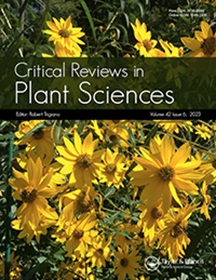杂草抗除草剂的遗传研究
IF 4.9
2区 生物学
Q1 PLANT SCIENCES
引用次数: 24
摘要
摘要在全球范围内,抗除草剂杂草的数量正在不断增加。一个成功的管理实践需要理解抵抗特性是如何遗传的。世界各地的杂草科学家对杂草抗除草剂的遗传模式进行了研究。根据抗性基因/机制的不同,杂草的遗传模式也不同。在大多数靶酶机制的情况下,遗传模式涉及单个核基因。然而,三嗪抗性杂草的母系(细胞质)遗传也被证明具有抗性的靶酶突变机制。靶酶过表达的抗性并不总是与单基因遗传模式相关。根据抗性类型的不同,靶酶突变和靶酶过表达机制的等位基因显性分为完全显性、半显性和隐性。然而,非靶点耐药机制更为复杂。具有非靶点抗性的杂草的遗传模式变化很大,应逐案研究。遗传模式在杂草群体的除草剂抗性动态中起着至关重要的作用,了解除草剂抗性性状的遗传有助于建立预测模型和新策略,以防止抗性等位基因的传播。本文章由计算机程序翻译,如有差异,请以英文原文为准。
The Genetic Inheritance of Herbicide Resistance in Weeds
Abstract The number of herbicide-resistant weeds is increasing globally. A successful management practice requires an understanding of how resistance traits are inherited. Weed scientists worldwide have investigated the mode of inheritance for herbicide resistance in weeds. Depending on the resistance gene/mechanism, varied patterns of inheritance have been documented in weed species. In most of the target-enzyme mechanism cases, the mode of inheritance involves a single nuclear gene. However, maternal (cytoplasmic) inheritance has also been documented for triazine-resistant weeds with the target-enzyme mutation mechanism of resistance. Resistance from target-enzyme overexpression is not always associated with the single-gene model of inheritance. Depending on the type of resistance, allelic dominance varies between complete dominance, semi-dominance and recessive for both target-enzyme mutation and target-enzyme overexpression mechanisms. The nontarget site mechanism of resistance is however, more complex. The pattern of inheritance in weeds with nontarget site resistance is quite variable and should be investigated case by case. The pattern of inheritance has a crucial role in the dynamics of herbicide-resistance within a weed population, and knowledge about the inheritance of herbicide resistance traits could help develop predictive models and novel strategies to prevent the spread of resistance allele(s).
求助全文
通过发布文献求助,成功后即可免费获取论文全文。
去求助
来源期刊
CiteScore
12.90
自引率
1.40%
发文量
15
审稿时长
>12 weeks
期刊介绍:
Critical Reviews in Plant Sciences focuses on presenting in-depth and up-to-date reviews of timely and/or cutting-edge subjects in the broad discipline of plant science, ranging from molecular biology/biochemistry through the areas of cell biology, plant pathology and physiology, genetics, classical botany, and ecology, to practical agricultural applications. Articles in the journal provide an up-to-date literature base for researchers and students, pointing the way towards future research needs. The journal is also a significant source of credible, objective information to aid decision makers at all levels.

 求助内容:
求助内容: 应助结果提醒方式:
应助结果提醒方式:


